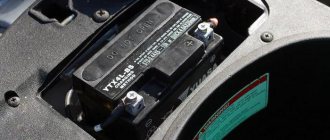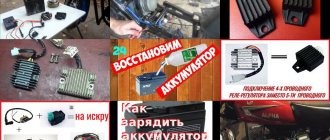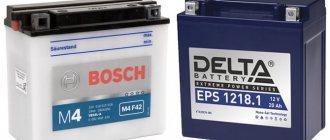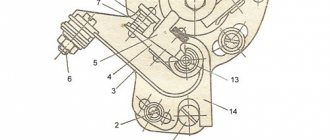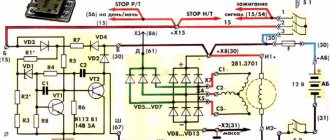In many ways, a scooter's gel battery is noticeably superior to conventional lead-acid batteries. Due to the thick consistency of its electrolyte, such a battery can be installed at a strong angle (but not upside down), and it is not afraid of vibrations. In addition, the gel battery maintains a consistently high current in the circuit, continues to operate efficiently even at a low charge level, and also has a noticeably longer service life. In addition, the choice of gel batteries is now quite good.
But, due to the fact that this technology is relatively new, many owners of motorcycles, scooters and atvs are wondering before purchasing them: is it possible to charge a gel battery? We answer this question quite confidently – it is possible and even necessary. Moreover, with proper use, one high-quality branded gel battery can withstand up to 1000 recharges. However, we should not forget that gel batteries differ markedly from lead-acid batteries in their operating principle. Therefore, their operation and charging procedure are somewhat different from what we are used to.
Is it possible to charge a scooter battery using a car charger?
The battery weakens over time, meaning its efficiency decreases and wear increases significantly. Thus, the time it takes to fully charge a battery is directly proportional to the age of the battery itself. A sign that the battery is fully charged is the release of gases in the form of bubbles. You can see this on batteries whose casing is made of transparent plastic. If the so-called “boiling” begins to occur during the first minutes of charging, the battery is faulty. In this case, it is better not to “reinvent the wheel” and buy a new battery.
Let's move directly to the situation when it is necessary to charge the scooter battery from a car charger. Basically, car chargers provide too much current, which is not suitable for a scooter battery. And in most cases it is not possible to adjust the required voltage. What to do in this case? – as an option, you can connect a light bulb to the circuit between the charger and the scooter’s battery. The light bulb should be 12 V, and its power should be 5 Watts. Thus, the question “can a scooter battery be charged with a car charger” becomes clear.
If there is no charge
To fix this problem, let’s first figure out how the battery is charged in general. While the engine is running (over 2 thousand revolutions), the generator is switched on, creating current (alternating current). To convert alternating current into direct current, a converter is provided in the scooter's electrical system. In this case, the stabilizer. The stabilizer also serves to prevent the scooter's battery from overcharging. If there is a problem in this system (generator-stabilizer-battery), the battery will not receive charging.
In order for charging to be constant, it is necessary to do the following:
- Check contacts and fuse. Clean the contacts and replace the fuse if broken.
- You should also pay attention to the battery terminals. They must be properly stripped and tightly attached.
- Inspect all plugs and connections (wires).
- Check for ground (wire connected to the equipment frame and battery negative.)
In most cases, the operations performed are enough to correct the problem in question. But there are other, more advanced cases. Let’s go even deeper and consider a number of actions that will certainly help.
First, let's install a working, fully charged battery on the scooter. Next, connect the multimeter to the installed battery. The multimeter scale should show 13.1 V. Then you need to start the engine, add gas so that the engine speed increases to 3 thousand per minute. We connect the multimeter back, it should output 14.5 V. If this is true, then the problem is in the battery itself. It needs to be replaced. For reference: the best battery for a scooter is considered to be acid-based.
Video
How to charge a gel battery for a moped without special charging
A couple of years after purchasing a moped, it becomes necessary to recharge the battery. And then it turns out that the battery belongs to the category of gel batteries, for which not all chargers are suitable. How to restore battery capacity if a special charger is not at hand?
Is there an alternative to special memory devices? The gel battery does not tolerate overdischarge, as a result of which the gel melts and turns into liquid. For this reason, devices capable of charging a lead or AKB battery for a moped are not suitable for recharging. These options have too high current and voltage ratings.
You need special chargers with automatic adjustment of the charging current, which are quite difficult to find on sale. The voltage of a suitable charger does not exceed 14 V, and the upper current threshold corresponds to 1/10 of the battery capacity (for 50 Ah - 5 A, for 7 Ah - 0.7 A). In this case, the device determines the charging time and turns off automatically when the battery is fully charged.
As an alternative to special chargers, you can use conventional chargers with a low charge current (for example, 0.5 A) and an output voltage of 12 V, which are suitable for recharging batteries with a capacity of 5 Ah or more. In this case, it is important to turn off charging in time to prevent the battery from heating up.
To determine the duration of the procedure, it is worth dividing the battery capacity by the current strength (for a 5 Ah battery and a 0.5 A charger, the charging time will be 10 hours). It is also important to periodically check the voltage on the gel battery using a tester: it should not exceed 14 V.
“Folk” method of recharging a gel battery If a gel battery needs urgent recharging, and you have not yet managed to find and order a special charger, use a simple trick. To implement this method, you will need a lead or AKB battery (for example, such as on the page https://www.bezpeka-hop.com/catalog/akkumulyatory_dlya_mopedov/) and charging from it. In this case, the second battery will be used as an “intermediary”.
The charging circuit through the second power source is as follows:
- connect the charger to the lead battery;
- connect the terminals of the lead battery to the contacts of the gel battery;
- check the temperature of the battery case; if it gets hot, stop the process;
- check the voltage (no more than 14 V).
"Boosting" of batteries
“Boosting” batteries is that the battery is first fully charged, and then discharged and these actions are repeated with a certain frequency. This usually takes 3-4 cycles. The gel battery, during the first cycles, should be supplied with a high voltage of 30 volts. Over time, when a couple of such cycles have passed, the voltage is gradually reduced to 14 volts.
It is advisable to discharge the battery with a weak source - for example, a 5-watt light bulb. However, even under light load, you should monitor the voltage so that it does not drop below 10.5 volts.
When the “patient” begins to accept current normally, you need to continue charging with a low current, which is approximately 0.1 of the battery capacity.
Restoring a gel battery is a simple procedure, but requires initial preparation. It should also be taken into account that it is advisable to restore a gel battery only if the moisture in the gel electrolyte dries out. If serious damage is detected that can be distinguished visually, it is better to replace the battery with a new one. After all, even with the slightest violation, the battery life is unlikely to be long.
Professional tips on how to charge a gel battery for a scooter
Life rushes us more and more. Moving around the area, even in small towns, not to mention big cities and metropolitan areas, is getting faster and faster. Everyone chooses wheeled vehicles according to their taste and family characteristics, both financial and physical. The number of people who choose to travel on two-wheeled motor vehicles is growing significantly every year. And the largest percentage of this equipment is scooters. They have a number of advantages over their larger counterparts in the form of a moped and a motorcycle. Well, and accordingly, an even greater advantage over its brother in the form of a bicycle. Changing from a bike to a scooter will not be difficult. The weight of the most common scooter model ranges from 60 kilograms, so keeping balance with it is not difficult.
Advantages of a scooter with gel batteries
Automatic transmission, electric engine start, ease of getting on the scooter due to the absence of a gas tank in the front, affordable price and operation without a driver's license. All these are quite significant advantages when the question arises of acquiring a scooter. Having become the owner of a scooter, the first thing you should do is remain its owner. We are talking about alarm systems, of which there are sufficient quantities on the motor market today to suit every financial taste.
There are several types of scooters - city scooters, exclusively for short trips on smooth asphalt, scooters with a retro design in the style of the 50s, and cruiser scooters, designed for long rides in comfort. And to ensure constant comfort when driving and starting, it is recommended to install gel batteries on scooters . What is the difference between a gel battery and the most common acid battery?
Appearance of a gel battery for a moped
What are batteries for?
When the engine is started, the current in the on-board network is generated from the generator. The latter is connected to the crankshaft pulley. The more revolutions, the faster the charge. However, if the engine is turned off, the generator will not produce current.
To prevent the on-board voltage from dropping, batteries are used in cars and scooters. It is thanks to them that the engine is started when the generator is not yet running. There are different types of batteries. In the past, lead-acid devices were often used. But recently, calcium and gel analogues have gained great popularity. They are a little different from the classic lead ones, so you need to know how to properly maintain them.
Operating principle of a gel battery
The gel base is created using various additives in the form of silicon added to the electrolyte. Due to this, the electrolyte turns into a thick gel. Considering that when driving a scooter its inclination constantly changes, with the installation of a gel battery, you don’t have to worry that the current supply will be interrupted. The gel better fills the space between the plates inside, which helps to significantly reduce their wear during severe discharge. Studies of a gel battery when driving a scooter showed the result that with prolonged and frequent inclinations, the charge level decreases by 25%. Although many manufacturing companies indicate in advertising information that such a battery will work upside down, this is not the case. Just a publicity stunt. Knowing and following all the rules for using a gel battery, it is quite possible to extend its service life to ten years.
Diagram of the internal structure of a gel battery
Pros of a gel battery:
- Thanks to the gel filling, they produce a high current when starting;
- Significant service life, of course, subject to compliance with operating rules;
- Possibility of use immediately after purchase, since it is not serviced;
- If the case is damaged, the contents do not leak, unlike its lead counterpart;
- Almost does not pay attention to changes in the position of the scooter;
- Considered one of the safest types of batteries in the world;
- Tolerates winter and frost well in general;
- Minor disadvantages:
- High voltage accuracy when charging;
- The price is several times higher than the cost of lead batteries.
What does the price depend on?
In addition to the brand and logos on the outside of the product, the main pricing factors are:
- Operating voltage.
- Battery capacity.
- Type of terminals for connecting the positive wire and ground to the scooter frame.
- Dimensions.
- Battery Type.
If everything is clear with the operating voltage, since all consumers require 12V power (the exception is Soviet motorcycles with 6V power), then it’s worth understanding the type of battery. There are three types to choose from, namely:
- Gel (the most expensive due to the practical effectiveness of maintaining capacity in any conditions).
- AGM (unlike standard lead-acid models, they have a porous filler-separator made of fiberglass, which during wear does not release sediment with the subsequent closure of one of the compartments).
- Lead-acid (divided into low-maintenance and maintenance-free models).
The cheapest batteries are traditional lead-acid ones with a service life of up to 3 years. They lose capacity if there are technological holes in the covers for maintenance or mechanical damage to the outer casing or the order of the structure of the internal submersible cathodes and anodes. This class of battery, as a rule, loses operating voltage instantly, which is affected by its initial small capacity. Despite this, such a battery is installed in 70% of scooters produced.
The type of terminals plays a less significant role in determining the price. They come with blades, which is common among all Asian mopeds and scooters. On German vehicles, a screw mechanism is used for fastening to the terminal. A less common scheme is with a clamp connection.
Battery charging rules
To ensure proper use of the battery, you should check its charge from time to time. This is done using a multimeter, an electronic device that combines the ability to measure voltage in various devices. It is necessary to connect it with probes to the battery and switch it to the direct current position of 20 volts. The scooter must not be started. To charge a gel battery at home, you only need to use a charger suitable for it. The charger must certainly have the ability to adjust the voltage.
Charger for gel battery with voltage regulation
Never try to charge a gel battery using a charger designed for car batteries. You should also ensure uninterrupted power supply to the device during charging. Charging occurs in the following way: on the charger, the charging current should be set to 10% of the battery power. If the current is higher, then there is a risk of significantly reducing the service life. The power is indicated directly on the battery case.
Advantages and disadvantages
The use of the gel determines the special performance characteristics of the power source. The advantages of gel car batteries are the following:
- The design can withstand up to 400 full discharges. The use of a gel in the form of an electrolyte determines that even with strong discharge, the density indicator remains unchanged.
- You can recharge the battery when it is partially or completely discharged.
- The service life is about 10 years. Options with conventional electrolyte last about 5 years.
- There is no need to urgently charge the battery if it is deeply discharged.
- The self-discharge rate is approximately 20% per year.
- Low internal resistance determines the high efficiency of the battery.
- The design does not require investment.
- High safety, which is achieved through the use of modern production technologies.
There are also some disadvantages of using the gel composition. GEL technology results in the following:
- The design is sensitive to the supplied voltage. If you apply too much current, the process of destruction of the main components will begin.
- The high density leads to difficulties in operating such batteries in winter. As a rule, at sub-zero temperatures the liquid begins to crystallize and it solidifies.
- The design is characterized by high sensitivity to short circuits. That is why you need to pay a lot of attention to the rules for using batteries with gel.
- Lead-acid versions with liquid electrolyte are much cheaper.
When comparing Sa-Sa and Gel type batteries, we note that the first version is much cheaper and is found on almost all cars. However, a significant increase in the number of consumers leads to the fact that lead-acid versions do not last long under constant and high periodic loads. Therefore, for cars of medium and high price categories, it is recommended to purchase a Gel-type battery.
The charger must be selected for a specific battery technology, taking into account the capacity.
Is this possible?
If you don't want your motorcycle or scooter battery to look like this, please read and take action!
The first photo shows a 12 volt motorcycle battery with a capacity of 18 amps. The reason for such a “deplorable” state of the case and internal parts is due to severe overcharging. The problem emerged after driving for more than 3 hours at high speed. The previous battery on the same motorcycle completely ruptured with the resulting “sour” consequences. Recall that an electrolyte is a solution of sulfuric acid, which is not very useful in small doses and not at all useful in close contact with it. Despite the AGM technology with which both batteries are made, they do not contain a completely liquid electrolyte, but if depressurized, glass fiber impregnated with acid can cause burns or poisoning if inhaled. The extent to which the battery case can inflate depends on the quality of the plastic. Typically, batteries for motorcycles and scooters use ABS plastic, which can be deformed; the housings of “cool” motorcycle batteries (usually they cost four times more) also have a flame extinguishing system. There was no such system in the right photo, but everything worked out.
THE REASONS FOR THIS ARE WRITTEN BELOW.:
In the first case, the culprit was a device that is found in all motorcycles, mopeds, scooters, ATVs, and cars. It is called a relay regulator or generator voltage regulator. Because The generator, which generates electric current to power the electrical devices on-board the motorcycle network, can spin at different speeds and this directly depends on the engine speed, then the voltage at the generator output floats from 0 (when the engine is not spinning) to 25-35 volts (at high speeds) . All electrical equipment of a motorcycle or scooter is designed for a voltage of no more than 12-15 volts. A voltage of 0-35 volts is supplied to the input contacts of the regulator relay, and after processing this by the relay-regulator, the voltage at the output contacts is 12-14 volts. Accordingly, with a faulty relay-regulator, two types of troubles are possible: the first, undercharging of the battery, is when this relay underestimates its output voltage. and the second is that the battery is heavily recharged, even when you haven’t been riding for that long.
DIAGNOSTICS OF RELAY REGULATOR:
To diagnose the regulator relay, you do not need to have special equipment. Any voltage tester (except an indicator screwdriver) will suit you. It is sold in any store and costs 90-150 rubles. It’s better to use a digital one, so you don’t have to worry about the scale and ranges. Approach the motorcycle, attach the tester probes to the battery terminals, 12-12.9 volts should appear on the display, start the engine and give maximum speed. Monitor the readings: if it is within 15 volts (taking into account the tester’s error), then this is normal, if it is higher, then the relay-regulator needs to be changed. According to the technical characteristics of manufacturers of starter batteries for motorcycles using AGM technology, the maximum charge voltage should not exceed 14.5-14.8 volts. In addition, it is important to limit the charging current, which the relay regulator of various models does not always do. If all standards for high-quality charging on motorcycles and scooters were observed, the batteries they contain would last two to three times longer! Another way to check the normal battery charge mode on a motorcycle is to monitor the temperature of the battery case, provided that before the start of the trip it was not discharged by more than 50%. A fully charged battery, and especially a new one, should not heat up after 20-30 minutes of intense driving. According to the conditions of the manufacturers, the optimal temperature is 15-25 degrees. Above this, premature aging of the battery plates begins. This is especially noticeable in winter, even with a completely serviceable relay, when a charging current begins to flow through a cold (below -10 degrees) battery during intensive driving and a sharp heating occurs. As a rule, the battery very quickly loses its declared capacity during such operation. In such cases, it is better to use batteries with liquid electrolyte. And if you don’t ride a motorcycle in winter, it’s also bad for the battery,
What does the price depend on?
In addition to the brand and logos on the outside of the product, the main pricing factors are:
- Operating voltage.
- Battery capacity.
- Type of terminals for connecting the positive wire and ground to the scooter frame.
- Dimensions.
- Battery Type.
If everything is clear with the operating voltage, since all consumers require 12V power (the exception is Soviet motorcycles with 6V power), then it’s worth understanding the type of battery. There are three types to choose from, namely:
- Gel (the most expensive due to the practical effectiveness of maintaining capacity in any conditions).
- AGM (unlike standard lead-acid models, they have a porous filler-separator made of fiberglass, which during wear does not release sediment with the subsequent closure of one of the compartments).
- Lead-acid (divided into low-maintenance and maintenance-free models).
The cheapest batteries are traditional lead-acid ones with a service life of up to 3 years. They lose capacity if there are technological holes in the covers for maintenance or mechanical damage to the outer casing or the order of the structure of the internal submersible cathodes and anodes. This class of battery, as a rule, loses operating voltage instantly, which is affected by its initial small capacity. Despite this, such a battery is installed in 70% of scooters produced.
The type of terminals plays a less significant role in determining the price. They come with blades, which is common among all Asian mopeds and scooters. On German vehicles, a screw mechanism is used for fastening to the terminal. A less common scheme is with a clamp connection.
How to charge a scooter battery
There is essentially nothing complicated in the process of charging the battery, especially if you have a charger that can charge the battery automatically. Therefore, there is nothing special to tell here...
We remove the battery from the scooter and thoroughly clean its body from dirt and dust. We take the battery and look on its case for the nominal capacity, which is expressed in ampere hours.
This battery has a nominal capacity of 4 A/h (shown in white in the photo), now we divide 4 by 10 and get the optimal charging current value of 0.4 A/h, which we will use to charge the battery.
This battery has a nominal capacity of 7 A/h (highlighted in red in the photo), now we divide 7 by 10 and get the optimal charging current value of 0.7 A/h, which we will use to charge the battery.
After we have decided on the value of the charging current, we proceed directly to the charging process itself. We unscrew the plugs (if any), connect the terminals of the charger to the battery (observing the polarity), set the charging current regulator to the minimum value, switch the charger to automatic mode (preferably), after all that has been done, plug the charger into the network and set it to the standard ammeter charging current) 0.4a/h (in my case) and we can calmly go about our business. The charger will charge your battery itself and turn off when the battery reaches 100% charge level.
This is how this happens in practice; for clarity, I measure the charging current with a multimeter.
What to do if the charger does not have an automatic mode?
In this case, the charging process becomes much more complicated and will require you to constantly monitor the charge parameters. My advice to you: don’t bother too much with measuring the temperature of the electrolyte, with constant monitoring of the voltage at the terminals. Just take and reduce the charging current by half, and the charging time will increase, but this will be the best way out of the situation.
When charging, do not forget to follow safety precautions:
Charging the battery should be carried out in a well-ventilated area, remember that the battery contains substances harmful to humans, so use personal protective equipment while working. Do not use open flames in the room where charging is carried out.
Helpful information
To protect the terminals from oxidation and the appearance of a white coating, they need to be cleaned, securely fastened and only then lubricated with grease (technical Vaseline, Litol, Solidol, etc.) or protected with a special acid-resistant mastic. The battery being serviced must have a special tube for removing gases; it must be taken outside the motorcycle and not closed; it serves to remove gases and condensate during operation. You can insert the battery into a rubber or plastic box that is slightly higher than the battery. Then, if the electrolyte suddenly spills out, it will not get on the frame and other parts of the motorcycle.

